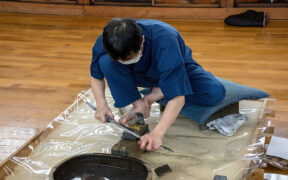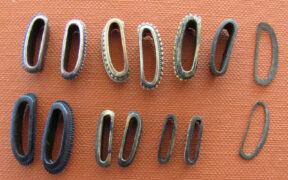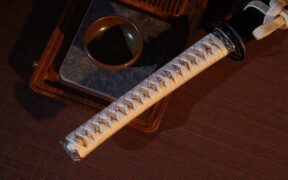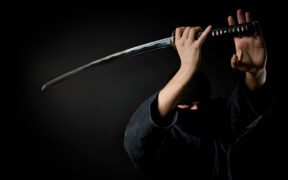Tsuka Ito: Role & Influence in A Japanese Sword
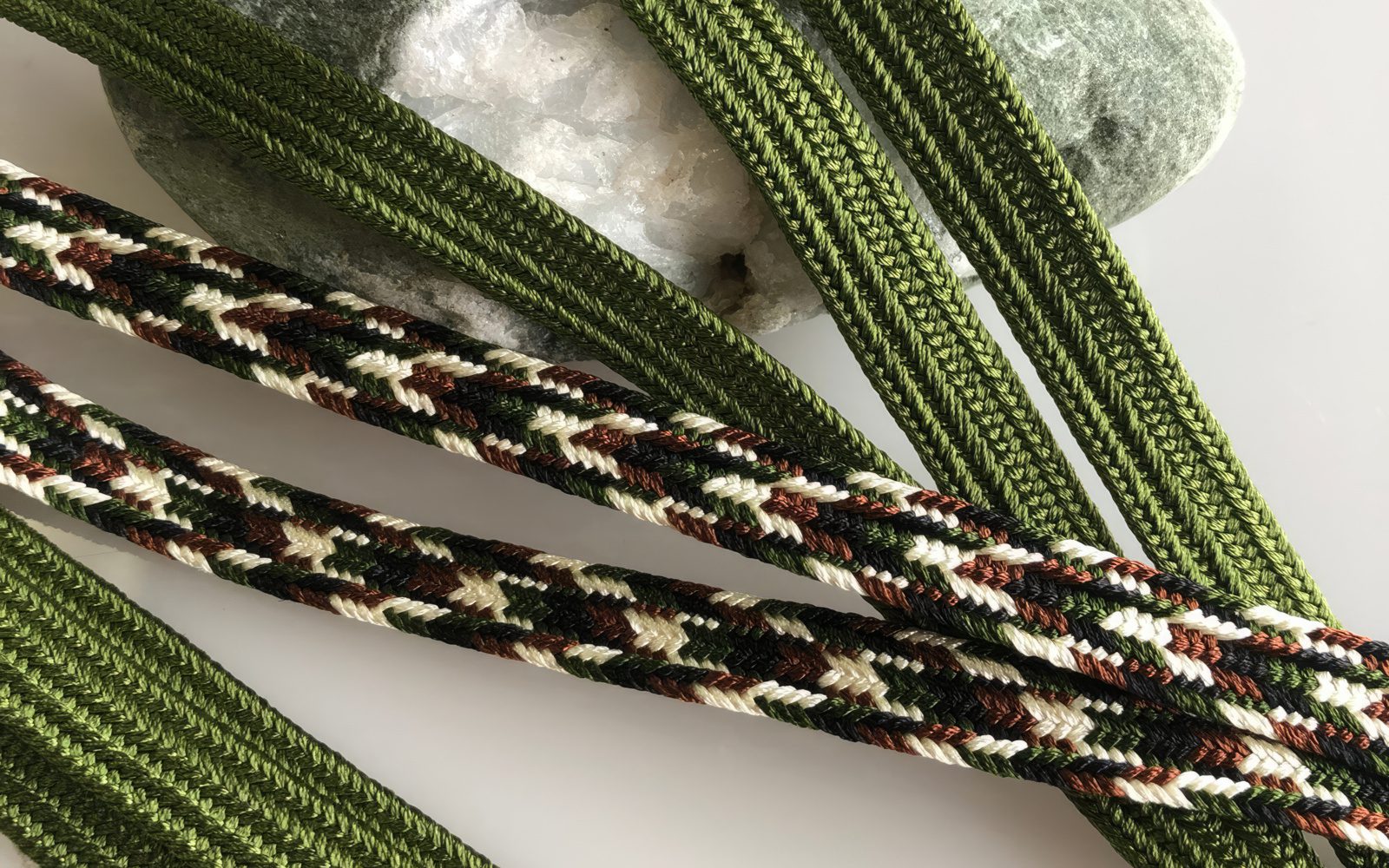
The tsuka ito is a crucial component in any Japanese sword as it plays both a functional and aesthetic role. Since the term “tsuka” translates to “handle”, the tsuka ito is often referred to as just “ito”, meaning “wrap” or “thread”. For those unfamiliar with terminology, it is important to differentiate between tsuka ito and tsuka maki, as the former refers to the handle wrap while the latter relates to the art of wrapping the handle using the cord.
Ito Purpose
Having evolved over many centuries, the handle wrap of a Japanese sword plays both functional and aesthetic roles. The understanding of the cord’s functional purpose becomes clearer if one has some knowledge of how the tsuka is constructed.
Sword Grip
The handle of a sword is undeniably important as it allows the blade to be wielded. For this reason, the tsuka ito plays a vital role in the grip of the sword. The wrapping material creates a textured surface to give it a secure grip, even in intense situations. It is said that the tsuka ito and how it is wrapped could mean the difference between life and death in a duel.
Tsuka Structure
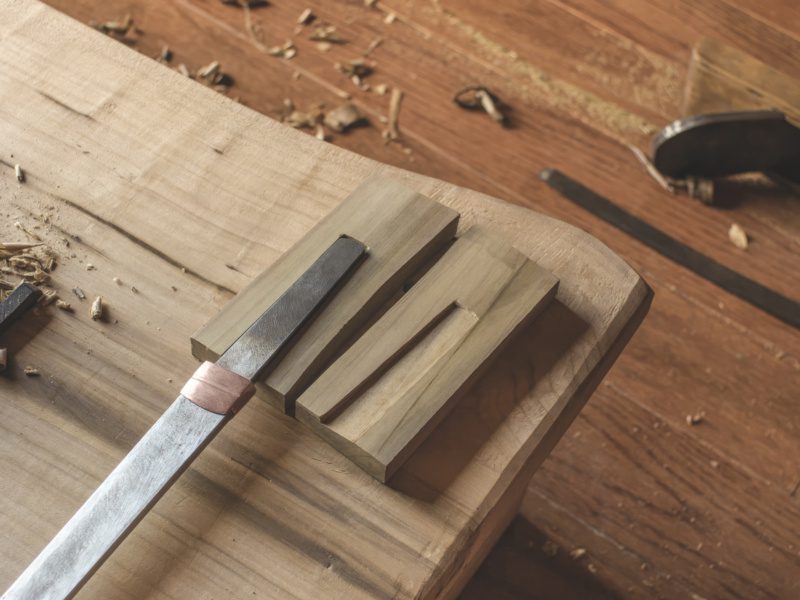
The traditional construction of a Japanese sword tsuka is a complex and lengthy process that results in two halves of a handle which is held together by sokui (rice paste glue), mekugi (bamboo peg), and the tight wrapping of the tsuka ito. As one of the outer layers of the handle, it also helps to protect the wooden core of the handle from wear and tear.
Aesthetics and Personality
Besides functional purposes, the tsuka ito also adds personality and accentuates the appearance of the sword. While many swords often use black, white, and navy ito, colors such as green, purple, and red are also great options.
Some Japanese swords have a theme such as a praying mantis or kaeru (frog) where the tsuba (guard) and other koshirae (fittings) of the sword will feature specific motifs. Pronounced in the same way as “to return” in Japanese, the frog is a good luck charm. In themes like this, having a green tsuka ito would complement the overall design.
Materials Used
There are many different types of material that can be used for a tsuka ito. From natural fibers to synthetic options, each has its own pros and cons. Depending on how the sword is used, the handle wrap may require replacement every few years.
Silk

Since silk was produced in ancient China around the 3rd millennium BCE, it is one of the commonest used materials as an ito. A strong natural material, it is a great option to tightly wrap the tsuka as it also has high tensile strength and decent abrasion resistance. Another advantage is that it can be dyed into almost any color.
Bound around the handle, it is soft, comfortable, and absorbs moisture easily. These are all key factors in battle. Additionally, genuine silk ito is easy to work with, resistant to mildew and rot, and gives any sword a luxurious feeling. However, the main issue with silk ito is that many sellers market synthetic silk as genuine silk.
Cotton
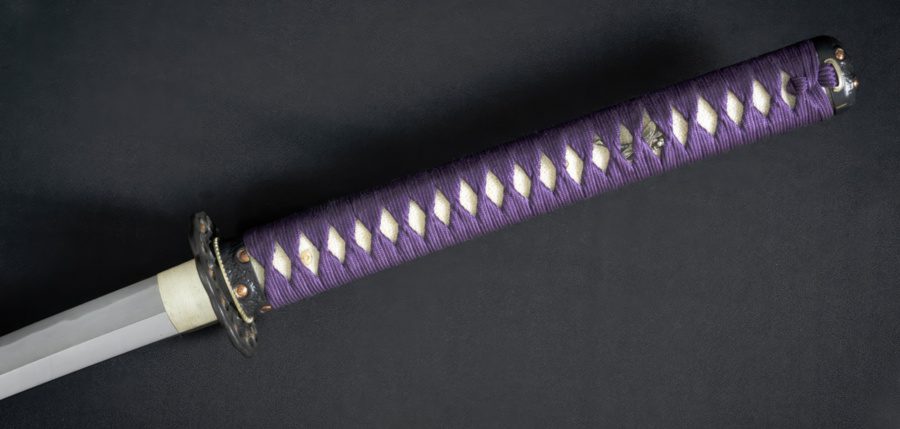
The use of cotton dates back to 5,000 BCE, later cultivated in present day Pakistan and woven into fabrics in China, Egypt, and South America. Like silk, cotton is also one of the oldest natural fibers used to make tsuka ito. Soft, comfortable, durable, and reasonably priced, it was the best alternative for those who wanted a more affordable option than silk.
Although its tensile strength may not be as good as silk, it has the best moisture absorption and can provide a better grip. Despite getting dirty easily, it is easy to clean and can be dyed into a range of colors. Cotton ito also folds with crisp edges, giving the tsuka a clean and refined appearance.
Synthetic Fibers

Synthetic fibers such as artificial silk can be made of various materials resulting in a range of quality. Cheaper synthetics can feel rough or fuzzy after a cleaning cycle. This can be an issue as rougher ito can cause friction burn, especially for those who use their sword quite a bit. However, some such as nylon fibers can be practical due to their strength, resilience, durability, and overall ease of cleaning.
Leather

Traditionally, leather ito is made from cow hide but it can also be made from other skins such as goat, pig, and more. Like any good leather product, a leather ito has the advantages of being soft and durable, offering a “tailored” grip once it has been broken in. However, the colors available are usually limited.
Compared to other material, leather ito needs more care to keep it supple and clean, avoiding any exposure to prolonged sunlight, and conditioned whenever possible. Since it is assembled from separate segments, it can result in visible seams that can become a weak point or is aesthetically undesirable for some. Its thickness makes it difficult to fold and crease. Depending on the finish, some leather ito can also be slippery, an issue that can be resolved by applying a thin coat of wax.
Nubuck

Nubuck is the sanded down and buffed version of full-grain leather, retaining some water resistant properties. However, it should be kept dry as frequent exposure to water can damage it. Compared to standard leather, it is smoother, warmer, more supple, and absorbs moisture better. Its thickness compared to fabric ito also ensures it provides a more comfortable grip.
While its surface is more fragile, it will have a “coating” after it has been used a while, giving it some protection. However, its thickness, which is similar to leather, makes it difficult to fold and crease. Its tendency to stretch also means more care is required when wrapping it around the handle.
Suede
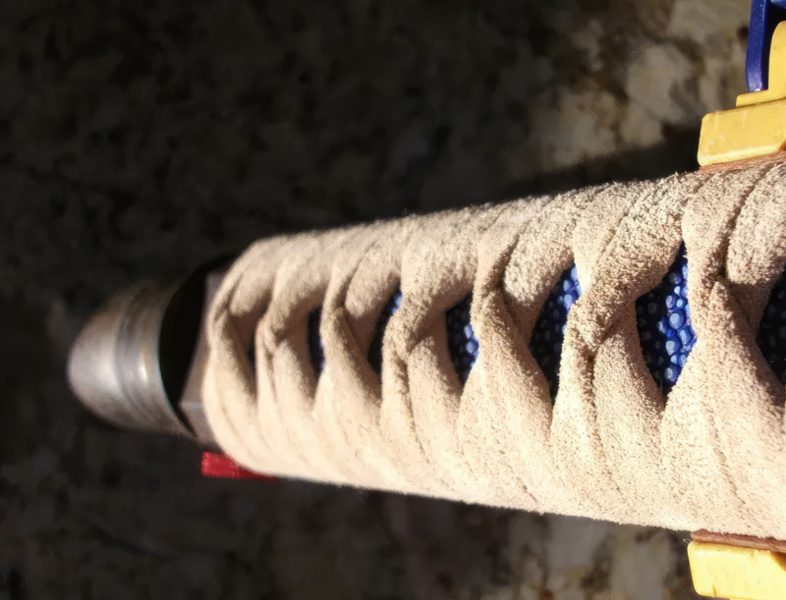
Suede is made from the underside of animal skin, making it softer and more pliable albeit less durable than leather. For those who prefer a soft and comfortable grip, a suede ito might just be the ideal choice. However, it may not be a good option for those who prefer a more refined appearance.
Additionally, a suede ito would not be suitable for more intricate styles of tsuka maki as it would be too thick, making it difficult to maneuver to accomplish the folds required. To compensate for the thicker tsuka when using suede ito, some sword makers use a thinner than recommended wood core for the handle. Suede ito also tends to be uneven and has seams that may become weak points.
Synthetic Suede
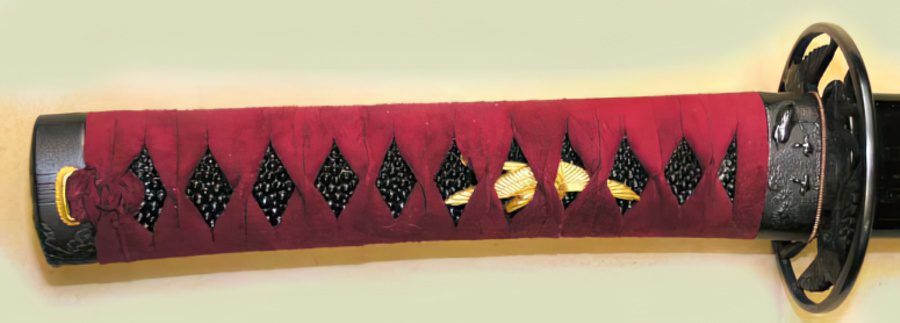
100% man made, synthetic suede is created to replicate all the advantages of the natural product while improving on its cons. It comes with a plastic strip within that prevents the material from overstretching, ensuring that it is stronger and more durable. However, this plastic component is rigid and can be difficult to work with.
Unlike its natural counterpart, synthetic suede is resistant to dirt and moisture, allowing it to be easily cleaned without much risk of damage. For those concerned regarding the use of animal products, synthetic suede ito is a great alternative.
Determining the Length & Width of Tsuka Ito
When it comes to determining how long of an ito you will need, there are many opinions on it. However, the general principle is similar: taking the length of the tsuka in inches (cm), converting it to feet (meters), and adding two to four feet (0.61 to 1.22 meters) to that number.
For example, a sword with an 8 inch (20.32 cm) tsuka will require 10 to 12 feet (3.05 to 3.66 meters) of tsuka ito. This method ensures that there is a decent amount of ito left for insurance and tying the end knots. It is always better to have more than not enough.
Meanwhile, the typical width for a woven fabric tsuka ito is usually 10mm, becoming 7-8mm after it is stretched. It is also available in 8mm, 6mm, and 4mm, with the narrower options being more suitable for wakizashi and tanto.
Tsuka Ito Care & Maintenance
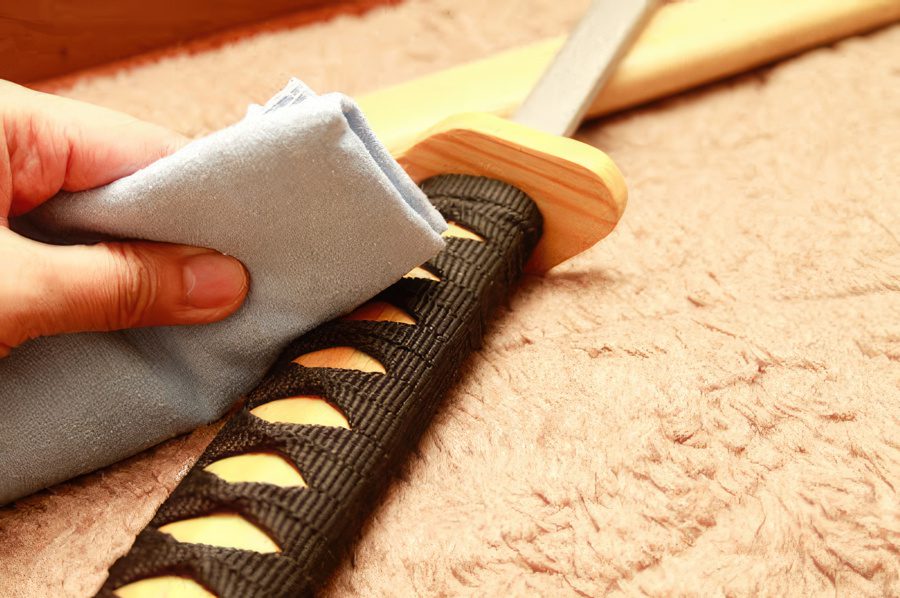
Tsuka ito care and maintenance helps to keep it in optimal condition. This is crucial as it ensures that the sword has a comfortable and secure grip for its wielder.
- Prevention – Prevention is key in the care and maintenance of the ito. This means only handling the sword with clean hands as any blood, sweat, and dirt can become embedded in the material. For leather wraps, a simple wiping down using leather cleaner or a damp cloth might suffice.
- Cleaning – If a more thorough cleaning is needed, all that is required is warm water, mild soap, and a soft cloth or brush. Use the cloth or brush to gently scrub the cord to prevent damaging the material. The tsuka ito can then be rinsed thoroughly and air dried to avoid mildew. Avoid using harsh chemicals and materials as it may damage the cord.
- Replacing and Rewrapping – With time, the ito can become worn or loose. Depending on its condition, the cord may need to be replaced or simply taken off and rewrapped by a skilled artisan or professional wordsmith.
